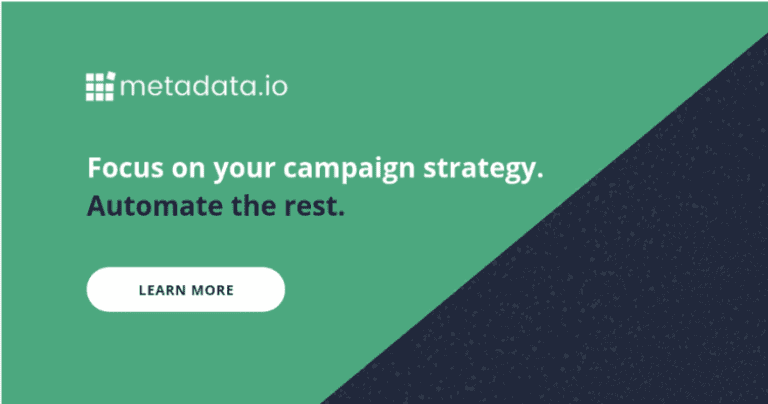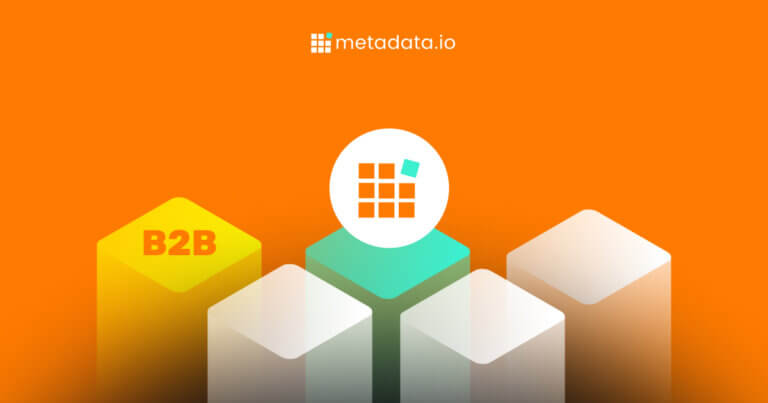ABX vs ABM: Unraveling the Future of Account-Based Strategies
In today’s B2B landscape, clients are inundated with generic marketing messages that fail to resonate with their specific needs.
According to Salesforce’s State of the Connected Customer report, 72% of business buyers expect vendors to personalize engagement to their needs (Salesforce).
However, traditional B2B marketing strategies often fall short in delivering the level of personalization required to engage these sophisticated buyers.
Account-Based Experience (ABX) marketing emerges as a powerful solution, focusing on creating unique, tailored experiences for high-value accounts and aligning closely with client expectations in the digital age.
What is Account-Based Experience (ABX) Marketing?
Account-Based Experience (ABX) Marketing is a customer-focused approach that enhances traditional Account-Based Marketing (ABM) by prioritizing personalized experiences for high-value B2B accounts throughout their buying journey.
Focus on Personalized Experiences for Target Accounts
ABX delivers tailored experiences to each target account. This approach is similar to named account marketing, where specific high-value accounts are targeted with personalized strategies. By using data and insights, you can understand the specific needs and preferences of each account, allowing for:
- Custom Content: Creating messages and interactions that appeal to individual accounts.
- Relevant Engagements: Providing valuable information at the right time, aligned with the account’s position in their buying journey.
- Consistent Communication: Engaging accounts across various platforms, from personalized emails to targeted ads.
Prioritizing personalization helps build trust with potential buyers and enhances engagement.
ABX vs. Traditional Account-Based Marketing
While ABM and ABX both target key accounts, they differ in important ways. A look into ABM history reveals how the approach has evolved to focus more on customer experience with ABX. Redefining ABM involves shifting focus to customer experience, which is central to ABX.
- Customer Focus: ABX emphasizes the overall customer experience, putting their needs first. Traditional ABM often focuses more on sales goals and lead generation.
- Team Collaboration: Marketing, sales, and customer success teams work closely together in ABX to provide a consistent experience. ABM typically involves only marketing and sales.
- Use of Data: ABX uses real-time data to ensure interactions are relevant, while ABM might rely on static data.
- Measuring Success: ABX looks at customer satisfaction and retention, focusing on long-term relationships. ABM often measures immediate outcomes like lead conversion.
By adopting ABX, you can better align with the modern B2B buying process and build stronger connections with your clients.
Differences between ABX and Traditional Marketing/ABM
Understanding the key differences between ABX and traditional ABM can help determine the best approach for your strategy.
Unique Features of ABX
ABX focuses on the customer experience throughout their entire journey, unlike traditional ABM, which mainly targets high-value accounts.
Key features of ABX include:
- Focus on Customer Needs: Addressing customer requirements at every stage, building stronger relationships by solving specific problems.
- Team Collaboration: Close cooperation between marketing, sales, and customer support to provide a consistent experience.
- Timely Engagement: Connecting with customers when they are most receptive, using data and signals.
- Full Journey Perspective: Considering the customer’s entire journey to enhance their experience and build loyalty.
Why B2B Marketers are Shifting to ABX
B2B marketers are moving towards ABX to meet buyers’ expectations for personalized experiences, similar to those in B2C markets.
Reasons for this change include:
- Higher Customer Expectations: Buyers want businesses to understand their needs and offer tailored solutions.
- Complex Purchasing Processes: ABX helps address multiple stakeholders and long decision cycles by providing relevant information.
- Team Alignment: Bringing together sales, marketing, and customer support improves communication and creates a unified approach.
- Improved Results: Focusing on the customer experience can lead to stronger relationships, higher satisfaction, and increased revenue.
This shift reflects a move beyond traditional metrics like MQLs toward comprehensive revenue marketing strategies that emphasize customer satisfaction and long-term relationships. Adopting ABX allows marketers to build stronger connections with their clients.
Benefits of ABX Marketing
Enhance Customer Relationships and Loyalty
ABX marketing provides personalized experiences for each account, strengthening relationships and boosting loyalty. By aligning marketing, sales, and customer success teams, you ensure consistent messaging and a smooth experience, increasing trust and engagement with customers. Personalized customer experiences can increase loyalty by 44% (Gladly).
Drive Revenue and Business Growth
Focusing on important accounts with ABX marketing can lead to significant revenue growth. By efficiently using resources and targeting high-potential accounts, you can improve conversion rates and deal sizes. Providing personalized experiences at the right time speeds up the sales cycle, leading to faster growth and maximizing ROI.
Key Elements of ABX Marketing
Understanding the foundational elements of ABX marketing is essential to create meaningful experiences for key accounts.
Importance of Personalization and Targeting
Personalization is central to ABX marketing. By utilizing detailed data on each target account, you can tailor content and interactions to address their specific needs and challenges. For instance, analyzing an account’s industry trends, recent company news, and competitive landscape allows you to craft messages that directly speak to their current situation. This level of specificity ensures that your solutions appear highly relevant and valuable to the decision-makers within the account.
Specific strategies for effective personalization include:
- Customized Content: Create case studies or whitepapers that demonstrate how your offerings have solved similar problems for other companies in the same industry. For example, if targeting a manufacturing firm facing supply chain issues, provide a case study showing how your solution optimized another client’s supply chain efficiency.
- Account-Specific Landing Pages: Develop landing pages tailored to each account, featuring personalized messaging and resources. These pages can include the company’s logo, industry-specific imagery, and content that addresses their unique challenges.
- Personalized Email Campaigns: Use personalized subject lines and email content that reference specific pain points or objectives of the account. For instance, addressing a recent initiative they’ve launched or a challenge mentioned in their latest earnings call.
Implementing these strategies can significantly enhance engagement.
Effectiveness of Multi-Channel Engagement
ABX marketing leverages multiple channels to engage with target accounts consistently and effectively. By combining channels such as email, social media, content marketing, paid advertising, and events, you can ensure your messaging reaches stakeholders where they are most active. For example:
- LinkedIn Outreach: Engage with key decision-makers by sharing relevant content, participating in industry discussions, and utilizing LinkedIn InMail for direct communication.
- Targeted Advertising: Use IP-based or cookie-based targeting to deliver ads specifically to employees of the target account across platforms like LinkedIn, Facebook, and industry-specific websites.
- Personalized Web Experiences: When individuals from the target account visit your website, display dynamic content tailored to their industry or role.
This multi-channel approach ensures consistent messaging and reinforces your value proposition at every touchpoint.
By utilizing these platforms and strategies, you can maintain a consistent and personalized conversation with your target accounts. Technology and data analytics help you track engagement across channels, allowing you to adjust strategies based on real-time feedback and build stronger relationships.
Strategies for Implementing ABX
Use Targeted Content and Outreach
To effectively implement ABX, create personalized content and outreach for each target account. Implementing innovative methods such as reverse-IP targeting and using data and analytics to develop content that addresses their specific challenges and goals. Leveraging innovative advertising techniques, such as LinkedIn thought leader ads, can significantly enhance your targeted outreach efforts.
Creating targeted content includes:
- Tailored Messaging: Customize messages to match each account’s objectives.
- Multiple Channels: Reach out through various channels with consistent messaging.
- Flexible Outreach: Use real-time data to adjust outreach based on account engagement.
Combine Inbound and Account-Based Strategies
Combining inbound marketing with account-based strategies enhances ABX effectiveness. While inbound attracts a wide audience, integrating it with account-based approaches ensures that important accounts receive personalized experiences.
Strategies include:
- Customize Inbound Content: Adapt inbound content to address the specific needs of target accounts.
- Use Engagement Insights: Tailor outreach based on how accounts interact with inbound content.
- Coordinate Teams: Have sales and marketing teams work closely for a consistent account experience.
- Use Integrated Tools: Employ technology that combines inbound and ABX efforts for tracking and personalization.
Leveraging Technology Platforms for ABX
Implementing ABX requires technology platforms to collect and analyze data, helping teams create personalized experiences using real-time insights.
Supporting ABX with Technology Platforms
Technology platforms support ABX by:
- Collecting Behavioral Data: Gathering information on account behavior and engagement.
- Analyzing Intent Signals: Using analytics to identify where accounts are in the buying journey. By identifying buyer intent, you can tailor your engagement more effectively.
- Personalizing Content: Enabling customization of messages for specific account needs.
- Coordinating Teams: Shared platforms ensure all teams work with the same data.
By using these technologies, teams can focus on high-potential accounts, make better use of resources, and work more efficiently.
- Efficiency Gains: Companies that use marketing automation to nurture prospects experience a 451% increase in qualified leads according to Annuitas Group.
Measuring ABX Success with Key Metrics
Measuring your ABX strategy’s effectiveness is important.
Key Metrics for Evaluating ABX Success
- Pipeline Acceleration: How quickly prospects move through the sales pipeline, shortening the sales cycle with personalized experiences. Implementing strategies for pipeline acceleration can help improve this metric.
- Revenue Influence: The impact on revenue by tracking contributions to lead generation and closed deals with target accounts.
- Customer Lifetime Value (CLV): The total revenue from a customer account over the relationship, indicating growth and retention.
- Customer Satisfaction and Retention Rates: Insight into how well your strategy resonates with clients, showing loyalty and long-term partnerships.
Focusing on these metrics helps measure the success of your ABX strategy and allows for data-driven improvements.
Ready to Transform Your Marketing Strategy?
Adopting ABX marketing enables you to create personalized, engaging experiences for your most valuable accounts, leading to stronger relationships and better results. However, implementing an effective ABX strategy can be challenging without the right tools and expertise. This is where Metadata.io comes in.
Metadata’s platform simplifies ABX by automating targeting, personalization, and engagement processes. It harnesses AI and real-time data to help you deliver tailored experiences at scale.
Transform your marketing strategy with Metadata.io—drive more leads, optimize campaigns, and scale your results easily. Book an introduction today!


